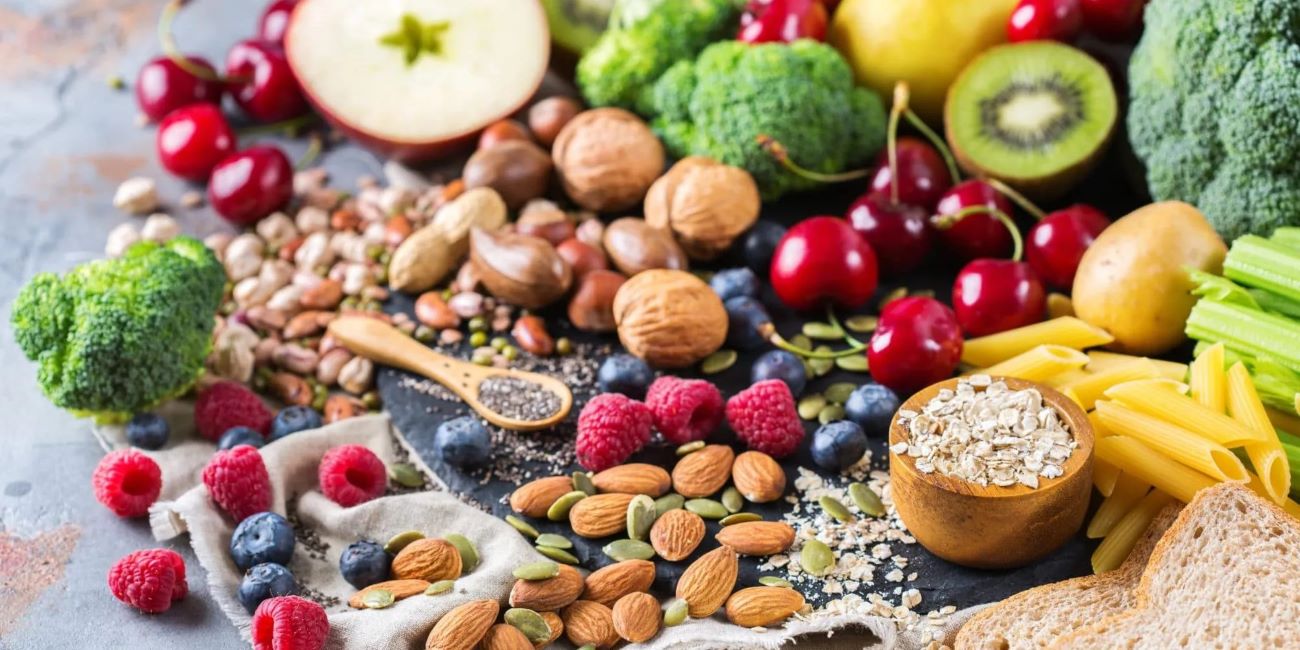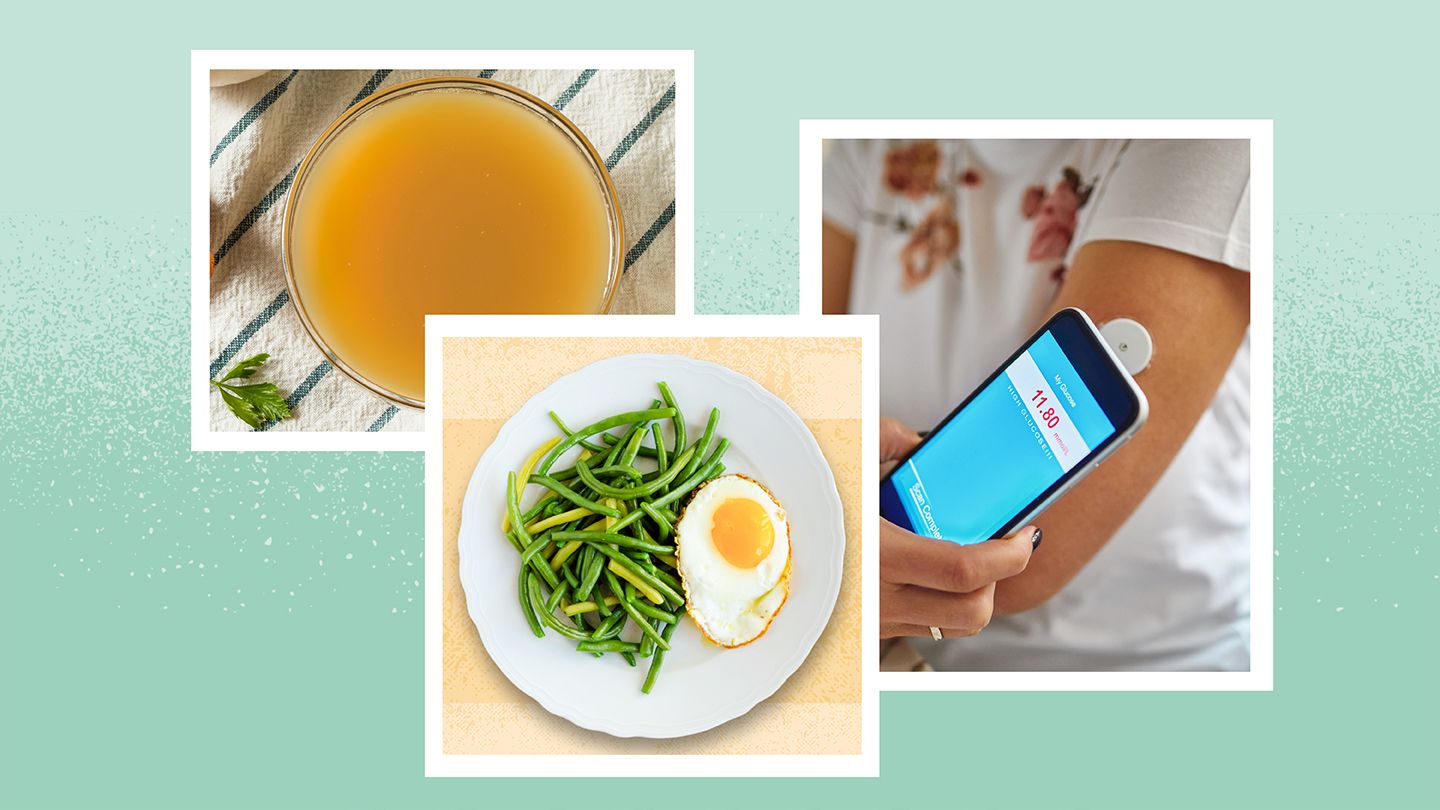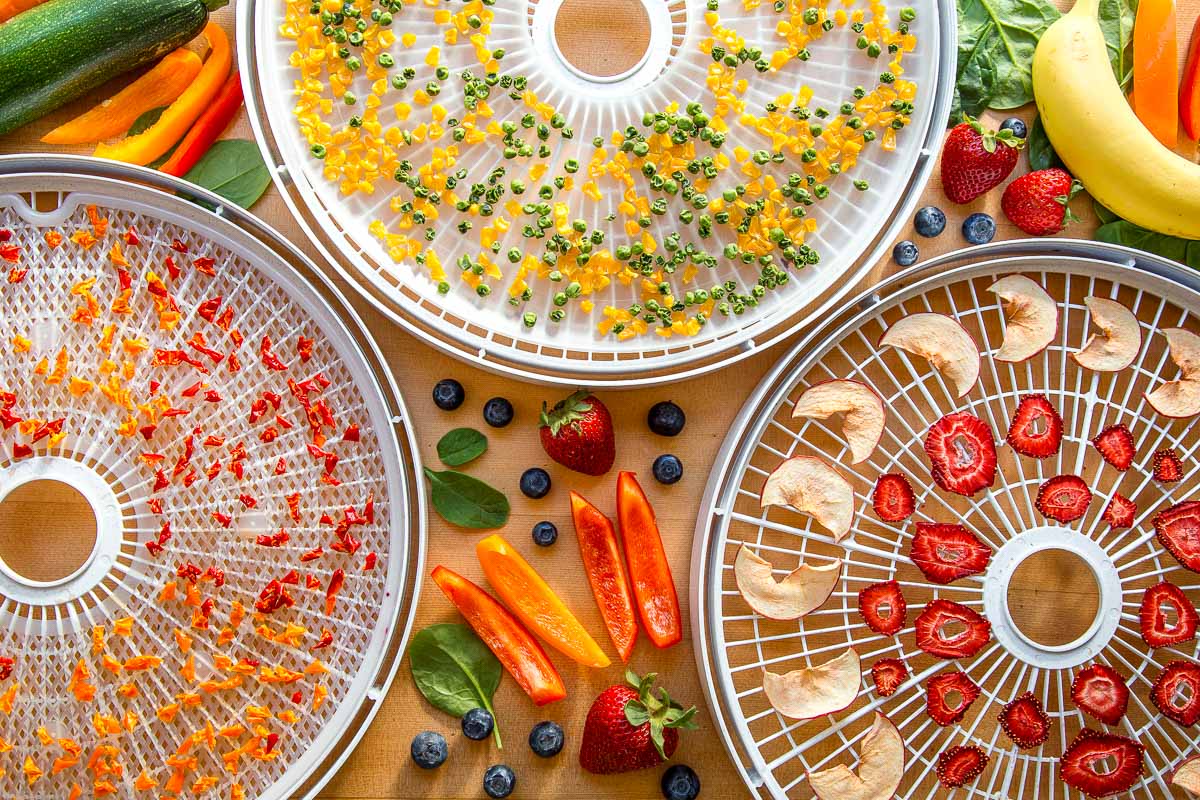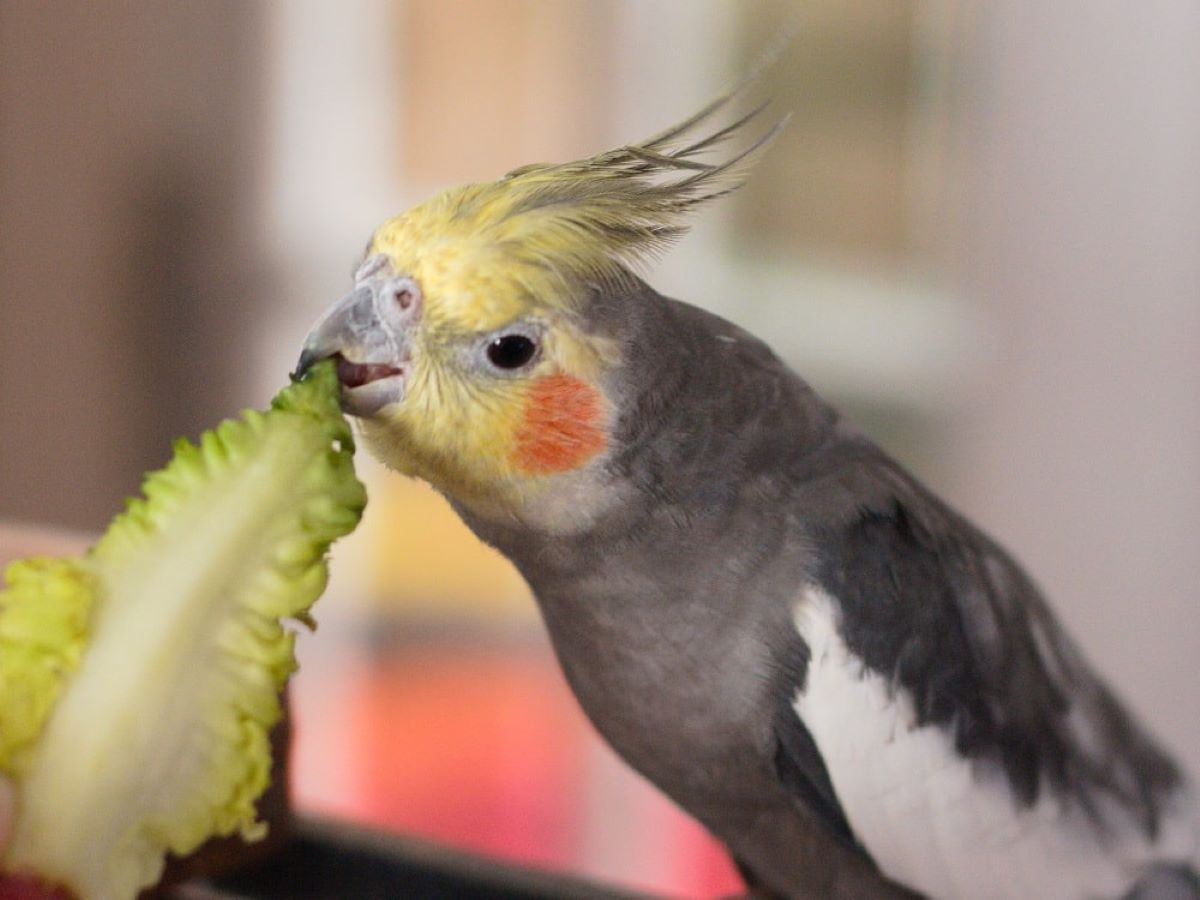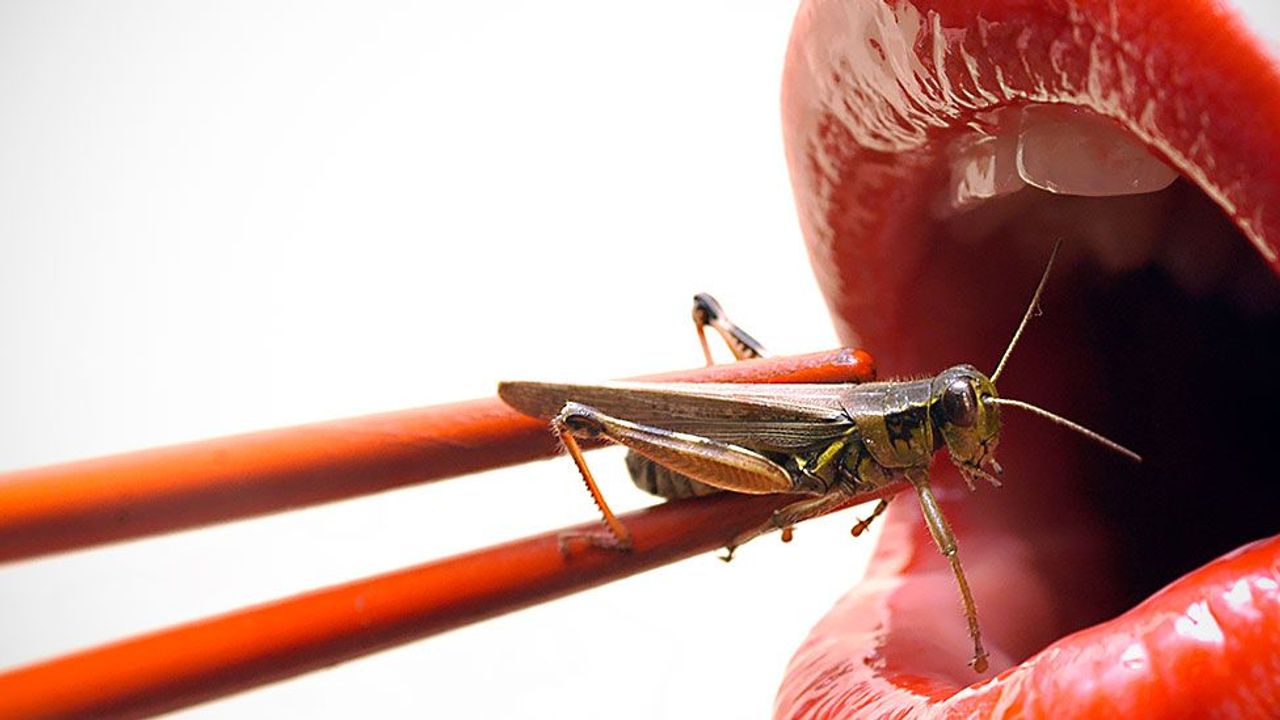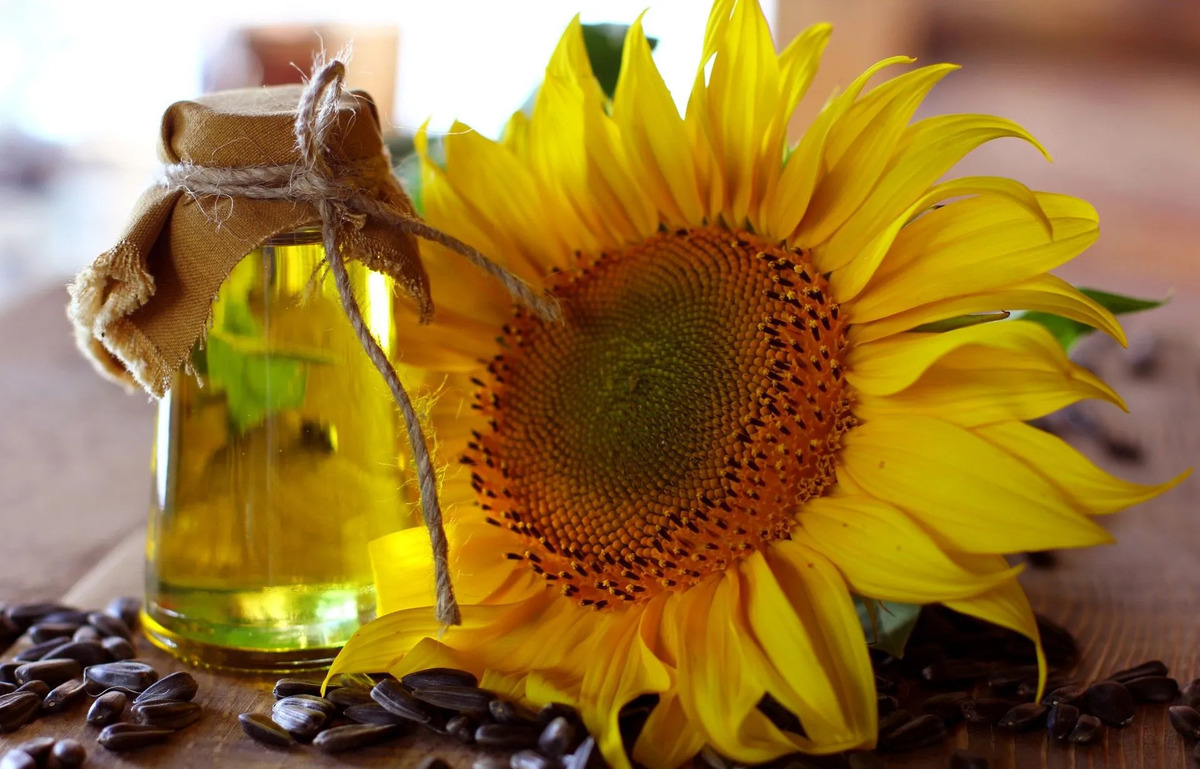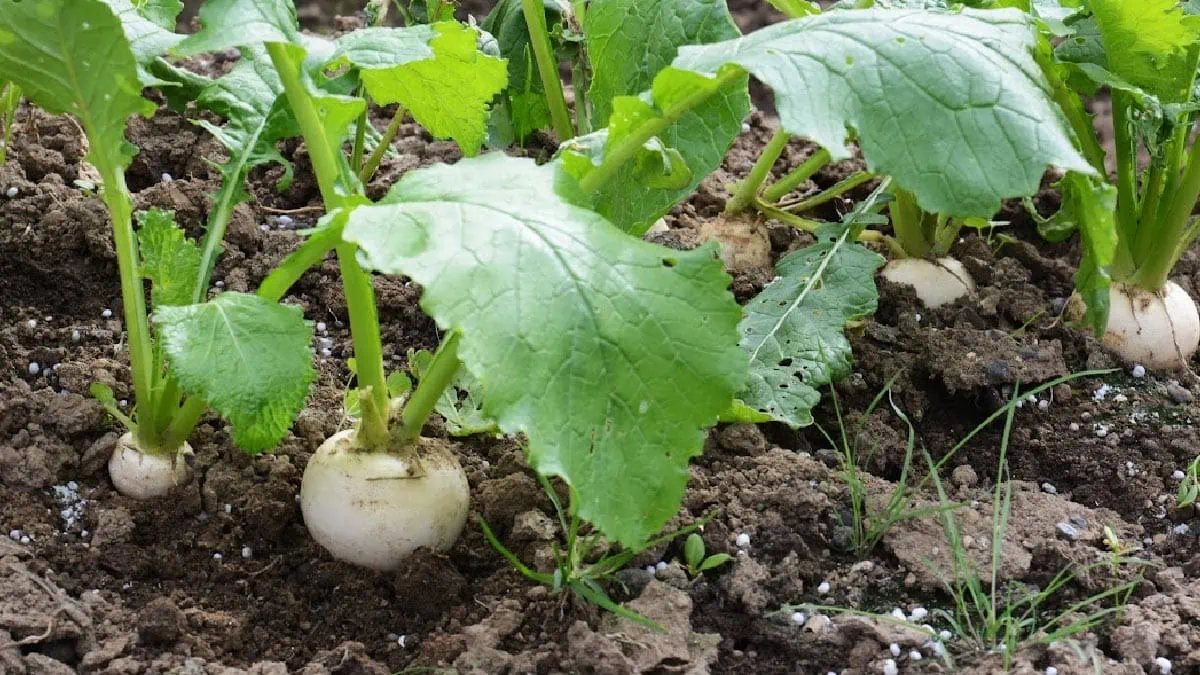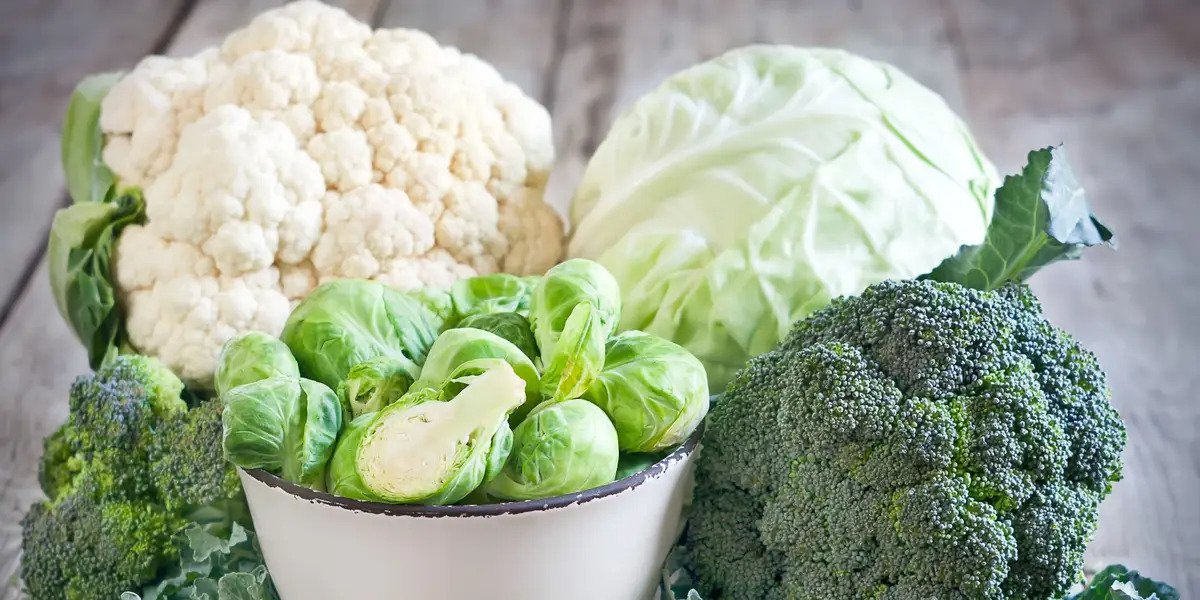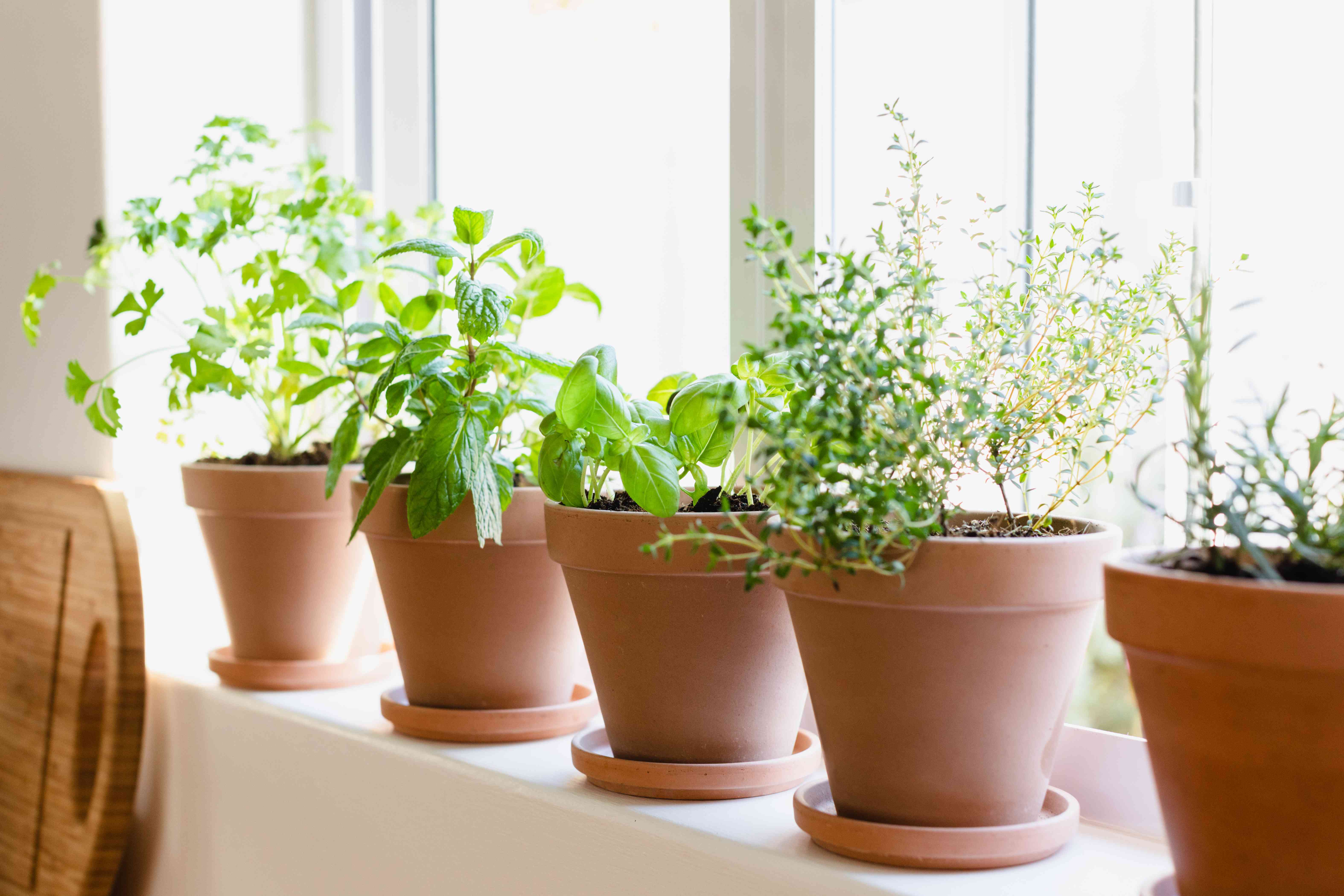Home>Types of Gardening>Edible Gardening>What Vegetables Can You Grow Indoors
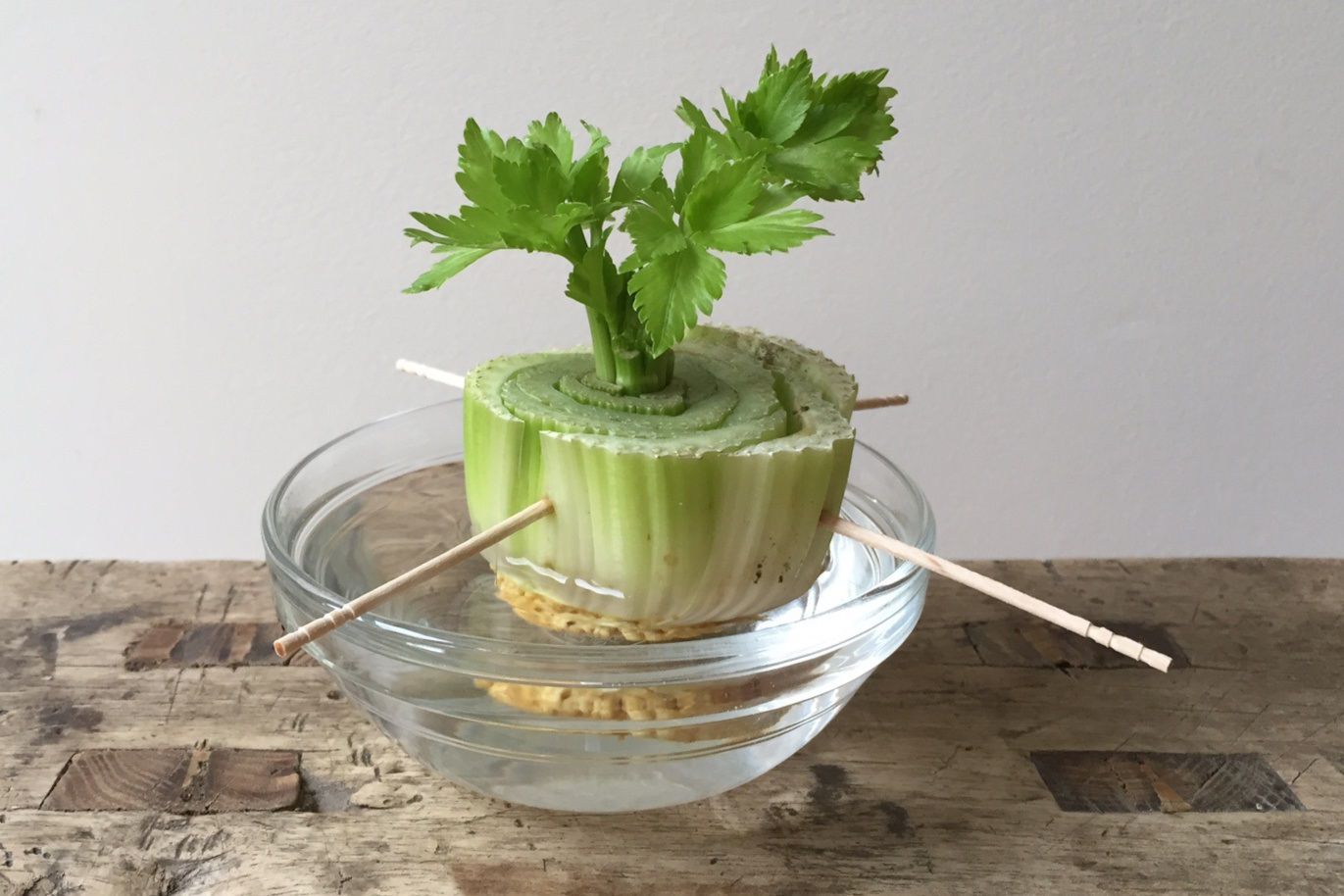

Edible Gardening
What Vegetables Can You Grow Indoors
Modified: February 9, 2024
Learn about the best edible gardening options for growing vegetables indoors and enjoy fresh produce all year round!
(Many of the links in this article redirect to a specific reviewed product. Your purchase of these products through affiliate links helps to generate commission for Chicagolandgardening.com, at no extra cost. Learn more)
Table of Contents
- Introduction
- Benefits of Growing Vegetables Indoors
- Factors to Consider when Growing Vegetables Indoors
- Best Vegetables to Grow Indoors
- How to Set Up an Indoor Vegetable Garden
- Tips for Successfully Growing Vegetables Indoors
- Common Problems and Solutions for Indoor Vegetable Gardening
- Harvesting and Maintaining Indoor Vegetable Plants
- Conclusion
Introduction
Welcome to the world of indoor vegetable gardening! Gone are the days when you needed a spacious backyard or a sprawling garden to grow your own fresh and delicious vegetables. With advancements in technology and increased interest in sustainable living, growing vegetables indoors has become a popular and rewarding practice for many garden enthusiasts.
Indoor vegetable gardening allows you to harness the benefits of gardening all year round, irrespective of the weather conditions outside. Whether you live in an apartment with limited outdoor space or in a region with extreme climates, cultivating vegetables indoors offers a convenient and accessible solution.
In this article, we will explore the fascinating world of indoor vegetable gardening, discussing the numerous benefits it offers, the factors to consider when setting up an indoor garden, the best vegetables to grow indoors, and tips for success. So, whether you’re a seasoned gardener looking to expand your horizons or a beginner eager to embark on this green journey, this article will provide you with all the information you need to get started.
Indoor gardening not only allows you to have a fresh and pesticide-free supply of nutritious vegetables at your fingertips, but it also offers a range of other advantages. Firstly, it provides you with the flexibility to grow vegetables year-round, regardless of external factors such as seasonality or climate. This means that you can enjoy your favorite vegetables at any time, even in the depths of winter.
Secondly, indoor gardening offers greater control over the growing conditions, enabling you to create the perfect environment for your plants. You have the power to regulate factors such as temperature, humidity, and lighting, ensuring optimal growth and minimizing the risk of pests and diseases. Additionally, indoor gardening eliminates the need for excessive watering and reduces the possibility of soil erosion, making it an eco-friendly option.
Finally, indoor vegetable gardening can be a therapeutic and rewarding experience. Engaging with nature and tending to your plants has been shown to reduce stress and anxiety, improve mood, and enhance overall well-being. It provides a sense of accomplishment as you witness the growth of your plants and enjoy the fruits of your labor.
Now that we have explored the benefits of indoor vegetable gardening, let’s delve deeper into the factors to consider when setting up your indoor garden.
Benefits of Growing Vegetables Indoors
Growing vegetables indoors offers a plethora of benefits that make it an attractive option for garden enthusiasts. Whether you have limited outdoor space or simply want to enjoy fresh produce all year round, here are some of the key advantages of indoor vegetable gardening:
- Year-Round Growing: One of the most significant benefits of indoor gardening is the ability to grow vegetables throughout the year, regardless of the season or climate. With indoor gardening, you have control over the environment, allowing you to provide the optimal conditions for your plants to thrive. This means you can enjoy fresh vegetables even in the dead of winter.
- Space Efficiency: Indoor vegetable gardening is ideal for those who have limited outdoor space or no access to a garden at all. With space-efficient techniques like vertical gardening and container gardening, you can maximize the use of your indoor space and still grow a variety of vegetables.
- No Weather Constraints: Outdoor gardening is often at the mercy of the weather, with extreme heat, frost, or heavy rains affecting the growth of plants. By bringing the garden indoors, you eliminate these weather constraints and have greater control over growing conditions. This means you can achieve more consistent and reliable yields.
- Greater Pest and Disease Control: Indoor gardening minimizes the risk of pests and diseases that commonly affect outdoor plants. By creating a controlled environment, you can significantly reduce the likelihood of infestations and diseases, resulting in healthier and more productive vegetable plants.
- Reduced Dependency on Pesticides: Growing vegetables indoors reduces the need for pesticides and other chemical treatments. Since indoor environments are less prone to pests and diseases, you can rely on organic and natural methods to maintain the health of your plants. This not only benefits your own well-being but also contributes to a healthier and more sustainable environment.
- Efficient Water Usage: Indoor vegetable gardening typically requires less water compared to outdoor gardening. By using techniques such as hydroponics or drip irrigation, you can minimize water waste and ensure that your plants receive the ideal amount of moisture. This makes indoor vegetable gardening an environmentally friendly choice.
- Accessibility and Convenience: Having an indoor vegetable garden offers the convenience of having fresh produce right at your fingertips. You no longer have to make trips to the grocery store for certain vegetables, and you can harvest them whenever you need them for cooking or enjoying raw.
These are just a few of the many benefits of growing vegetables indoors. From year-round gardening to greater control over growing conditions, indoor vegetable gardening provides a wealth of advantages that can enhance your gardening experience and provide you with delicious and nutritious vegetables throughout the year.
Factors to Consider when Growing Vegetables Indoors
While growing vegetables indoors can be a rewarding and enjoyable experience, there are several factors to consider to ensure the success of your indoor garden. Here are some key considerations:
- Lighting: Adequate lighting is essential for the growth and development of vegetable plants. Since indoor environments may not provide sufficient natural light, you will need to supplement it with artificial lighting. LED grow lights are a popular choice as they are energy-efficient and can mimic the spectrum of natural sunlight. When choosing lighting, consider the specific light requirements of the vegetables you intend to grow.
- Temperature: Most vegetables prefer temperatures between 65-75°F (18-24°C) for optimal growth. It is crucial to maintain a consistent temperature range in your indoor garden. Avoid placing your plants near drafty windows or sources of heat. Consider using thermostats to regulate the temperature, especially during colder months.
- Humidity: Some vegetables thrive in higher humidity levels, while others prefer drier conditions. It is important to research the specific humidity requirements of the vegetables you plan to grow and adjust accordingly. Using a humidifier or placing a tray of water near the plants can help increase humidity levels in the growing area.
- Air Circulation: Proper air circulation is essential for preventing the growth of molds or fungi and promoting healthy plant growth. Make sure the indoor space where you plan to grow vegetables has adequate ventilation. This can be achieved by using fans or opening windows when weather permits.
- Containers and Soil: Choose containers that provide sufficient drainage to prevent waterlogging and root rot. Use a high-quality, well-draining soil mix suitable for vegetable gardening. Consider using containers with good insulation properties to protect plant roots from extreme temperatures.
- Watering: Proper watering is crucial for indoor vegetable gardening. Since containers can dry out faster than outdoor soil, it’s important to monitor soil moisture regularly and water as needed. Avoid overwatering, as it can lead to root rot. Consider using self-watering containers or installing a drip irrigation system for more precise watering.
- Nutrition: Vegetables grown in containers may require regular fertilization to replenish nutrient levels in the soil. Use an organic, balanced vegetable fertilizer and follow the manufacturer’s instructions for application. Regularly monitor plant health and adjust fertilization as needed.
- Space and Plant Selection: Consider the available space in your indoor environment and choose vegetable varieties that are suitable for container gardening. Compact or dwarf varieties are often ideal for indoor gardening due to their smaller size. Optimize space by using vertical gardening techniques or hanging planters.
- Pest Control: While indoor gardening reduces the risk of pests, it’s important to remain vigilant. Monitor your plants regularly for signs of pests or diseases. If an infestation occurs, use organic pest control methods or natural insecticides to protect your vegetables.
- Maintenance and Care: Indoor vegetable gardening requires consistent care and attention. Monitor your plants for any signs of stress or nutrient deficiencies. Regularly prune, trim, and support your plants as needed. Stay proactive in preventing and addressing any issues that arise.
By considering these factors and tailoring your indoor gardening approach to meet the specific needs of your vegetable plants, you can create an optimal environment for successful growth and abundant harvests.
Best Vegetables to Grow Indoors
When it comes to indoor vegetable gardening, not all vegetables are equally suited for growing in an indoor environment. Some plants require more space, sunlight, or specific growing conditions that may be challenging to replicate indoors. However, there are several vegetables that thrive in indoor settings and can provide a bountiful harvest. Here are some of the best vegetables to grow indoors:
- Leafy Greens: Leafy greens like spinach, lettuce, kale, and Swiss chard are excellent choices for indoor gardening. They have shallow root systems, making them ideal for containers. Harvest the outer leaves as needed, and the plants will continue to produce throughout the growing season.
- Herbs: Fresh herbs can add flavor and aroma to your dishes, and they are well-suited for indoor gardening. Popular herbs like basil, parsley, cilantro, and chives can thrive in small pots on a sunny windowsill or under grow lights. Snip off leaves as needed, and your herbs will continue to grow and provide a steady supply.
- Microgreens: Microgreens are young, tender greens that are harvested when they are just a few inches tall. They are packed with nutrients and add a burst of flavor and color to salads, sandwiches, and more. Common microgreens such as arugula, radish, and broccoli can be grown easily and quickly indoors.
- Tomatoes: While tomatoes require more attention and care, they can be successfully grown indoors. Compact or dwarf varieties like cherry tomatoes or patio tomatoes are best suited for indoor gardening. Provide adequate support for the plants, ensure proper lighting, and watch your indoor tomato plants yield delicious fruits.
- Peppers: Both sweet peppers and chili peppers can thrive in an indoor environment. Compact varieties like bell peppers or jalapenos are suitable for container gardening. Peppers require a longer growing season, so ensure they receive sufficient light, warmth, and regular watering for optimal growth.
- Radishes: Radishes are quick-growing root vegetables that can be grown in containers indoors. Their small size and fast growth make them an ideal choice for beginners. Plant radish seeds and enjoy crisp, spicy radishes in a matter of weeks.
- Green Onions: Green onions, also known as scallions, are easy to grow indoors. You can regrow green onions from the discarded roots of store-bought onions. Place the roots in water or soil, and within a few days, you’ll have fresh, flavorful onions to use in your cooking.
- Beans: Bush beans or pole beans can be grown indoors if provided with proper support and adequate lighting. Consider using a trellis or vertical support system to maximize space. Beans are a rewarding indoor crop, offering a delicious harvest of tender pods.
- Carrots: Although carrots require deeper soil, they can be grown in longer containers indoors. Choose a variety specifically suited for containers and ensure the soil is loose and well-draining. Thin out the plants as they grow to allow room for the carrots to develop.
- Mushrooms: While not technically a vegetable, mushrooms are an excellent option for indoor gardening. You can easily grow mushrooms in a container or a mushroom-growing kit. Follow the specific instructions for the type of mushrooms you choose, and soon you’ll have a fresh supply of earthy delights.
These are just a few examples of the best vegetables to grow indoors. Experiment with different varieties and find what works best for your space and preferences. With the right conditions and care, you can enjoy a successful indoor vegetable garden and savor the joy of harvesting homegrown produce.
How to Set Up an Indoor Vegetable Garden
Setting up an indoor vegetable garden requires careful planning and consideration. By following these steps, you can create a thriving indoor garden to grow your own vegetables:
- Choose the Right Location: Select a location in your home that receives ample natural light or is easily accessible to artificial lighting. South-facing windows are ideal for maximizing sunlight. Alternatively, you can set up grow lights to ensure your plants receive the necessary light.
- Assess Growing Space: Measure the available space and determine how many plants you can accommodate. Consider utilizing vertical space with hanging planters or shelves to make the most of your indoor garden.
- Select Suitable Containers: Choose containers with sufficient drainage holes and appropriate size for the vegetables you plan to grow. Plastic, ceramic, or fabric pots are common options. Ensure the containers are clean and sterilized before planting.
- Prepare the Soil or Growing Medium: Use a high-quality potting soil or a specialized soil-less growing medium, such as coco coir or peat moss. Ensure the medium is well-draining and provides adequate nutrients for your plants.
- Start Seeds or Purchase Seedlings: Decide whether you want to start your vegetables from seeds or purchase seedlings. If starting from seeds, follow the instructions on the seed packets for proper germination and transplanting. Alternatively, purchase healthy seedlings from a reputable nursery or garden center.
- Plant and Water: Fill the containers with the prepared soil or growing medium. Plant the seeds or seedlings according to the recommended spacing for each vegetable variety. Water the soil lightly but thoroughly, ensuring it is evenly moist.
- Provide Adequate Lighting: If your indoor space does not receive enough natural light, supplement it with artificial lighting. LED grow lights are an energy-efficient and effective option. Position the lights at an appropriate distance above the plants to provide sufficient intensity.
- Monitor Environmental Conditions: Keep an eye on temperature, humidity, and airflow in your indoor garden. Aim for optimal temperature and humidity levels depending on the vegetable varieties you are growing. Use fans or open windows to maintain proper air circulation.
- Fertilize as Needed: Regularly monitor the nutrient levels of your plants and feed them with a balanced, organic vegetable fertilizer. Follow the recommended application rates and frequency provided by the fertilizer manufacturer.
- Water and Maintain: Water your plants regularly, ensuring the soil remains consistently moist but not waterlogged. Monitor the moisture levels by inserting a finger into the soil to check if it is dry a few inches below the surface. Remove any dead leaves or trim the plants as needed to promote healthy growth.
By following these steps and providing the necessary care, you can set up and maintain a successful indoor vegetable garden. Remember to adjust the process based on the specific needs of the vegetables you are growing, and enjoy the experience of watching your indoor garden flourish.
Tips for Successfully Growing Vegetables Indoors
Growing vegetables indoors requires attention to detail and proper care to ensure successful growth and abundant harvests. Consider the following tips to maximize your indoor gardening experience:
- Choose the Right Vegetables: Select vegetable varieties that are well-suited for indoor gardening. Compact or dwarf varieties are ideal due to limited space. Focus on vegetables that have shorter growing seasons and can thrive in containers or small spaces.
- Provide Adequate Lighting: Light is crucial for the growth and development of vegetable plants. If natural light is insufficient, supplement it with artificial lighting. Position the grow lights at the appropriate distance and adjust the height as the plants grow. Aim for around 12-16 hours of light per day.
- Maintain Optimal Temperature and Humidity: Most vegetables prefer temperatures between 65-75°F (18-24°C). Avoid exposing plants to extreme temperature fluctuations. Monitor humidity levels and use a humidifier if necessary, especially during dry winter months.
- Use Proper Watering Techniques: Avoid overwatering or underwatering your plants. Check the moisture level regularly by inserting a finger into the soil. Water thoroughly when the top inch of soil feels dry, allowing excess water to drain out. Use a watering can with a narrow spout for precise watering.
- Consider Hydroponics or Self-Watering Systems: Hydroponics, which involves growing plants in a nutrient-rich water solution, can be an efficient and space-saving option for indoor gardening. Alternatively, self-watering containers or irrigation systems can help maintain optimal moisture levels and reduce the risk of overwatering.
- Prune and Support Plants: Regularly prune your vegetable plants to remove any dead or damaged leaves and promote air circulation. Provide support such as trellises, stakes, or cages for plants that need vertical growth. This prevents crowding and allows better light penetration.
- Monitor and Control Pests: Indoor plants are still susceptible to pests. Inspect your plants regularly for any signs of infestation, such as holes in leaves or sticky residue. Use organic pest control methods, like neem oil or insecticidal soap, to eliminate pests without harming the environment.
- Pollination: Some vegetables, like tomatoes or peppers, require pollination to set fruit. In an indoor setting, simulate pollination by gently shaking or tapping the plants to disperse pollen. Alternatively, use a small brush to transfer pollen between flowers.
- Rotate Plants: To prevent nutrient depletion and minimize the risk of diseases, rotate your vegetable plants between different locations or containers every few months. This helps maintain soil health and encourages balanced growth.
- Harvest Regularly: Harvest your vegetables when they reach the appropriate size and maturity. Regular harvesting promotes continuous production and prevents overcrowding. Use a sharp pair of scissors or garden shears to minimize damage to the plants.
- Continue Learning: Indoor gardening is a continuous learning process. Stay curious and seek knowledge from trusted sources, experiment with different techniques, and reflect on your successes and challenges. Join online communities or local gardening groups to share experiences and gain valuable insights.
By implementing these tips, you can set yourself up for success in growing vegetables indoors. Remember to be patient, observe your plants closely, and make adjustments as needed. Enjoy the journey of nurturing your plants and reaping the rewards of homegrown vegetables.
Common Problems and Solutions for Indoor Vegetable Gardening
Indoor vegetable gardening can come with its fair share of challenges. However, with some knowledge and proactive measures, you can overcome common problems and ensure the health and success of your plants. Here are some common issues encountered in indoor vegetable gardening and their solutions:
- Lack of Sufficient Light: Insufficient light is a frequent problem in indoor gardening. If natural light is limited, supplement it with artificial lighting. Provide your plants with full-spectrum grow lights, positioning them at the appropriate distance and duration to mimic natural sunlight.
- Overwatering or Underwatering: Finding the right balance of watering can be tricky. Overwatering can lead to root rot and nutrient deficiencies, while underwatering can cause plant stress and stunted growth. Monitor soil moisture regularly and water when the top inch of soil feels dry. Ensure proper drainage and avoid leaving plants sitting in standing water.
- Pest Infestations: Indoor plants can still fall victim to pests like aphids, mealybugs, or spider mites. Regularly inspect your plants for any signs of infestation. If pests are present, remove them manually or treat with organic pest control methods like insecticidal soap or neem oil. Isolate any heavily infested plants to prevent the spread of pests.
- Fungal or Bacterial Diseases: Diseases like powdery mildew or damping-off can affect indoor vegetable plants. Maintain proper ventilation and air circulation to minimize the likelihood of these diseases. If necessary, treat affected plants with organic fungicides or remove and dispose of infected plant material to prevent further spread.
- Nutrient Deficiencies: Indoor plants may experience nutrient deficiencies due to limited access to natural soil nutrients. Use a balanced, organic vegetable fertilizer to provide essential nutrients. Monitor your plants for signs of yellowing leaves or stunted growth and adjust fertilization accordingly.
- Temperature Fluctuations: Extreme temperature fluctuations can stress indoor plants and impact their overall health. Ensure a stable temperature range for your indoor garden, avoiding sudden changes. Protect your plants from drafts and keep them away from heat sources or cold windows. Use insulation materials to buffer temperature shifts, if necessary.
- Improper Pollination: Some vegetables require pollination for successful fruiting, even when grown indoors. Mimic natural pollination by gently shaking the plants or using a small brush to transfer pollen between flowers. Alternatively, consider hand-pollinating flowers with a cotton swab, ensuring each flower receives pollen from multiple sources.
- Vegetable Crowding: Overcrowded plants can hinder their growth and increase the risk of pests or diseases. Follow spacing guidelines when planting, ensuring adequate room for each plant to fully develop. Regularly thin overcrowded areas or consider transplanting to larger containers if necessary.
- Insufficient Air Circulation: Poor air circulation can lead to stagnant humidity and increased risk of diseases. Use fans or open windows to facilitate proper air movement in your indoor garden. This helps prevent the growth of molds or fungi and strengthens plant stems.
- Monitor pH Levels: Check the pH levels of the soil or growing medium regularly. Most vegetables prefer a slightly acidic to neutral pH range (around 6.0-7.0). Adjust pH if needed using organic amendments or pH-adjusting products.
By being proactive and addressing these common problems in indoor vegetable gardening, you can maintain the health and vitality of your plants. Regular monitoring, timely intervention, and implementing best practices will help you overcome challenges and enjoy a thriving indoor vegetable garden.
Harvesting and Maintaining Indoor Vegetable Plants
Harvesting and maintaining your indoor vegetable plants properly is essential for continuously enjoying a bountiful harvest and ensuring the long-term health of your plants. Here are some tips to help you with the process:
- Harvesting: Harvest your vegetables at the appropriate time to enjoy their peak flavor and texture. Follow the specific harvesting guidelines for each vegetable variety, as the timing may vary. Generally, leafy greens can be harvested by removing outer leaves, while fruits like tomatoes and peppers should be picked when they are fully ripe.
- Pruning: Regular pruning is necessary to maintain the shape and health of your indoor vegetable plants. Remove any yellowing or damaged leaves to prevent the spread of diseases. Additionally, prune excessive foliage to allow better air circulation and light penetration, which promotes healthier growth.
- Staking and Support: Some indoor vegetable plants, like tomatoes or vining varieties, may require support structures to prevent them from toppling over. Use stakes, cages, or trellises to provide support as needed. This helps keep the plants upright, prevents breakage under the weight of heavy fruits, and promotes efficient space utilization.
- Fertilization: Indoor vegetable plants may require regular fertilization to replenish nutrients in the soil or growing medium. Use an organic vegetable fertilizer according to the manufacturer’s instructions. Avoid overfertilizing, as it can lead to nutrient imbalances or burning of the plants’ roots.
- Watering: Consistent and appropriate watering is vital for the health of your indoor vegetable plants. Avoid overwatering or underwatering by monitoring the moisture levels of the soil or growing medium. Water thoroughly when the top inch of soil feels dry, allowing any excess water to drain out. Adjust the frequency of watering based on the specific needs of your plants.
- Continued Maintenance: Regularly inspect your indoor plants for any signs of pests, diseases, or nutrient deficiencies. Promptly address any issues that arise to prevent further damage. Maintain cleanliness by removing dead plant material, fallen leaves, or debris from the growing area, as they can attract pests or harbor diseases.
- Propagation and Succession Planting: Extend your indoor vegetable harvest by propagating plants from seeds or cuttings. Start new plants before the currently growing plants reach the end of their life cycle. This allows for a continuous supply of fresh vegetables and maximizes the use of your indoor gardening space.
- Rotate Plants: To maintain soil health and prevent the buildup of pests or diseases, rotate your indoor vegetable plants periodically. Move plants to different locations or containers to avoid planting the same type of vegetable in the same spot consecutively. This helps prevent nutrient depletion and promotes balanced growth.
- Stay Observant: Observe your plants closely for any changes in growth patterns, leaf color, or signs of stress. Adjust your care routine accordingly to address any issues. Regularly monitor environmental conditions such as temperature, humidity, and airflow to create optimal growing conditions.
- Enjoy the Harvest: Finally, savor the fruits of your labor! Use the freshly harvested vegetables in your favorite dishes, share them with friends and family, or store them appropriately for later use. The joy and satisfaction of growing and harvesting your own indoor vegetables are unmatched.
By following these tips for harvesting and maintaining your indoor vegetable plants, you can prolong their productivity, address issues promptly, and enjoy a continuous supply of fresh and delicious homegrown vegetables.
Conclusion
Indoor vegetable gardening opens up a world of possibilities for growing your own fresh and nutritious produce, even if you have limited outdoor space. By understanding the benefits of indoor gardening, considering important factors like lighting and temperature, choosing the right vegetables, and implementing effective techniques, you can create a thriving indoor garden and enjoy a year-round harvest.
Remember to provide your plants with adequate light, regulate temperature and humidity levels, and properly nourish them with water and nutrients. Regular monitoring and addressing common problems such as pests, diseases, and nutrient deficiencies are essential for the success of your indoor garden. Proper pruning, staking, and continued care will help maintain the health and productivity of your plants.
Indoor vegetable gardening is not only practical but also offers numerous rewards. It allows you to have a constant supply of fresh vegetables while providing a therapeutic and enjoyable gardening experience. Engaging in indoor gardening promotes sustainable living, reduces food miles, and encourages a deeper connection with nature.
So whether you’re a seasoned gardener looking to expand your green thumb indoors or a beginner taking your first steps into the world of vegetable gardening, embrace the possibilities of indoor gardening. Experiment with different vegetable varieties, find joy in nurturing your plants, and relish the satisfaction of harvesting and tasting your own homegrown vegetables.
With proper planning, care, and a little bit of patience, you can create a vibrant and successful indoor vegetable garden that brings nature’s bounty right into your own home. So go ahead, roll up your sleeves, and get started on your indoor gardening journey – your taste buds and well-being will thank you!

